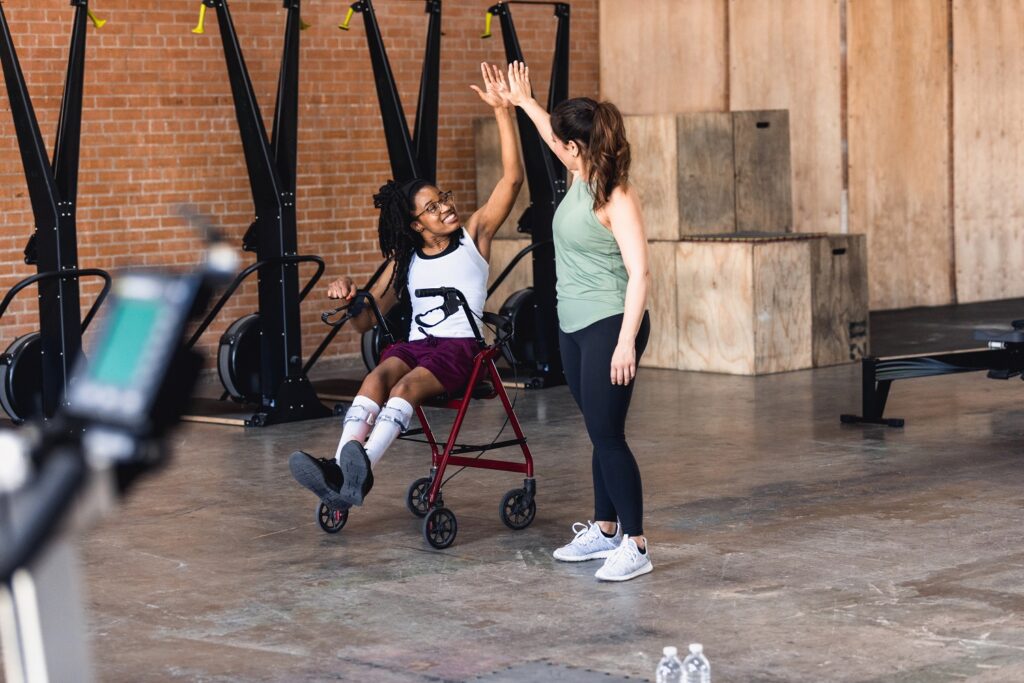Exercising with Resistance Bands
Resistance bands can offer an affordable approach when beginning a strength training program. They can be utilized for strength, cardio, balance, flexibility, and other things by beginners and experts alike. The constant resistance provided by resistance bands is excellent for both eccentric (muscle stretching) and concentric (muscle contraction) activities. This form of resistance is gentle on joints and connective tissues, reducing the risk of damage and can be comparable to pneumatic strength training equipment. Resistance bands come in a wide variety of forms, but we'll be concentrating on non-looped bands.
In this blog, we continue looking at strength training exercises for wheelchair users, or those exercising from a seated position, using resistance bands. Here, we will be focusing on the lower body muscles. Strengthening your lower body is important for several reasons. First, working your entire body (including the lower body) can be essential to overall health. Second, you don't want to lose the remaining muscle mass or leg strength you have. Lastly, if you are only a part-time user of a mobility device, strengthening your lower body is important for preventing falls when you stand, walk, or transfer. When it comes to working the lower body, we know this can be challenging for those with physical disabilities. You often have to find creative ways that work best for you. That being said, we recognize that these exercises may not be suitable for those with spinal cord injuries or paralysis of the lower body. Please consult a physician or healthcare provider before trying them.
With most of these exercises, proper footwear is important to ensure that the band does not slip off of your foot and come back toward you. For more tips on safety, as well as choosing the right resistance band, and the proper way to anchor the bands, please check out our previous blog, 6 Upper Body Strength Training Exercises for Wheelchair Users. For exercises that target the core muscles, check out 6 Core Strength Training Exercises for Wheelchair Users.
7 Lower Body Exercises using Resistance Bands
Leg Press - Targets glutes, hamstrings, quadriceps, and calf muscles
With this simple exercise, sit up straight with your back against your wheelchair. Holding one end of the resistance band in each hand, place your right foot in the center of the band. Next, hold the ends of the band near your waist at the hips. It is important not to hold the bands too high (toward your face), in case it slips off your foot. With your left foot flat on the floor, bend your right knee toward your chest, and you will be in the start position. Straighten your right leg by pushing your foot out away from you in a smooth motion (do not hyper-extend the knee), then bring your knee back to the starting position near your chest. Repeat this action 10-12 times, then do the same with the left leg. In time, you can work your way up to 2-3 sets, depending on your fitness level. With this and the rest of the exercises, you could always start with 8-10 reps if needed. This type of exercise could also be performed on a leg press machine.
Calf Raise - Targets the calf muscles
As with the leg press above, for this exercise, you will want to sit upright with your back against a chair and hold one end of the resistance band in each of your hands. Place the ball of your right foot in the middle of the band, straighten your leg out, and pull the ends of the band back toward you. For less tension, you can hold the bands near your knee; for more, pull them back to your hips. Again, keep the ends lower (away from your face). Bring your toes back toward you a little (not so far that the band slips off your foot) to the starting position. Now, point your toes out away from you, then bring them back slowly. Repeat this 10-12 times, then exercise your left calf muscle, eventually, working your way up to 2-3 sets. Alternatively, try placing both feet in the center of the band and working them at the same time. If you are able to stand for short periods of time, and standing calf raise can be done by placing both feet on the floor and lifting your heels while holding onto something for support. The HUR Pulley machine has dropdown side rails that can be used for this purpose.
Leg Extension - Targets quadriceps muscles
This exercise is similar to one of the dual-function movements of the HUR Leg Extension/Leg Curl machine. To perform this exercise, you can use either a looped resistance band, or you can tie a regular band into a loop. Place one end of the loop under your left foot and the other end around your right ankle. Sit up straight in your chair and place your hands on your thighs to keep yourself stable. With your feet side by side on the floor spread slightly apart, start the exercise by extending your right foot out, but don’t completely straighten your leg or lock your knee. During the movement, keep your right thigh on the chair. Then, slowly move your foot back to the starting position. If the band is irritating your ankle, you may try using a pad of sorts (like a small towel) under the band to prevent this. As with the first exercise, repeat this 10-12 times, then switch to the opposite leg. Eventually, you can increase your sets to 2 or 3.
Leg Curl - Targets hamstrings and calf muscles
With the leg curl exercise, you will loop your resistance band around the back of your right ankle after you have secured both ends to something in front of you. The anchor point should be a foot or so off the ground (or whatever works best for you). Another option is to have a partner hold the ends for you. Sit with your back against the back of the wheelchair. Your left foot should be flat on the floor, and your right foot should be extended forward to where your leg is almost, but not quite, straight. With tension in the band, bring your right foot back next to your left or even a little under your chair, then extend it back out to the starting position. Repeat this move 10-12 times, then move to your left leg, working your way up to 2-3 sets. As with the previous exercise, a leg curl exercise can be performed on the HUR Leg Extension/Leg Curl machine.
Hip Abduction - Targets the outer hip (gluteus medius, gluteus minimus, and tensor fasciae latae) muscles
For the hip abduction exercise, you have a few options for how you sit in your chair, and each works the muscles a little differently. You can sit up straight, lean forward a little, or lean back. Find one that works best for you, or try them all. With your knees and feet (flat on the floor) together, loop the resistance band snug around your thighs just behind the knees. You can either tie the band or just give it a couple of twists to form a loop. You are now in the starting position. Keeping your feet together, spread your knees out to the sides away from one another as far as you can, then slowly and smoothly bring them back together. Repeat 10-12 times, working up to 2-3 sets. If it is more comfortable, you can also try moving your feet out to the sides parallel to your knees. As an alternative, you can also move one knee (or leg) out at a time. This exercise is similar to an abduction machine but could also be performed on a pulley machine using a strap around the ankle.
Straight Leg Hip Adduction - Targets inner thigh (adductor longus, adductor brevis, adductor magnus, and gracillis) muscles
To perform this exercise, you will want to attach your resistance band out to your right side to a low (2 feet or less) stable object and form a loop. If you have a partner, they could hold the ends of the band out to the side for you. With you sitting up in a wheelchair (or chair), slip your foot into the loop so that the band is around your ankle. Keeping your left foot flat on the floor in front of you, straighten and lift your right leg slightly off the floor and move it out toward where the band is anchored. Keeping tension in the band, start the exercise by bringing your right leg back to the center, then let it slowly go back out to the right. Repeat this action 10-12 times, then do the same for the other leg, facing the opposite direction. Work your way to 2-3 sets. Adduction machines are available that perform this exercise. Similar to the Abduction exercise, you could also use a pulley machine.
Ankle Dorsiflexion - Targets the shin (tibialis anterior) muscles
In this last lower body exercise, we wanted to add the very important, but often neglected, ankle dorsiflexion. This is a powerful tool in preventing falls, especially for seniors. To set up this exercise, place your foot in the center of the resistance band, then hold both ends of the band together in your left hand and pull it taught out to your left. Next, step on the band with your left foot. With both feet on the floor and the band tight, your feet should be about six inches or so apart (adjust for more or less tension). To begin the exercise, bring your toes up toward you, keeping your heel on the floor, then relax and bring your toes back down to the floor. After you repeat this 10-12 times, perform this with your left foot. As with the other exercises, try to work your way up to 2-3 sets.







